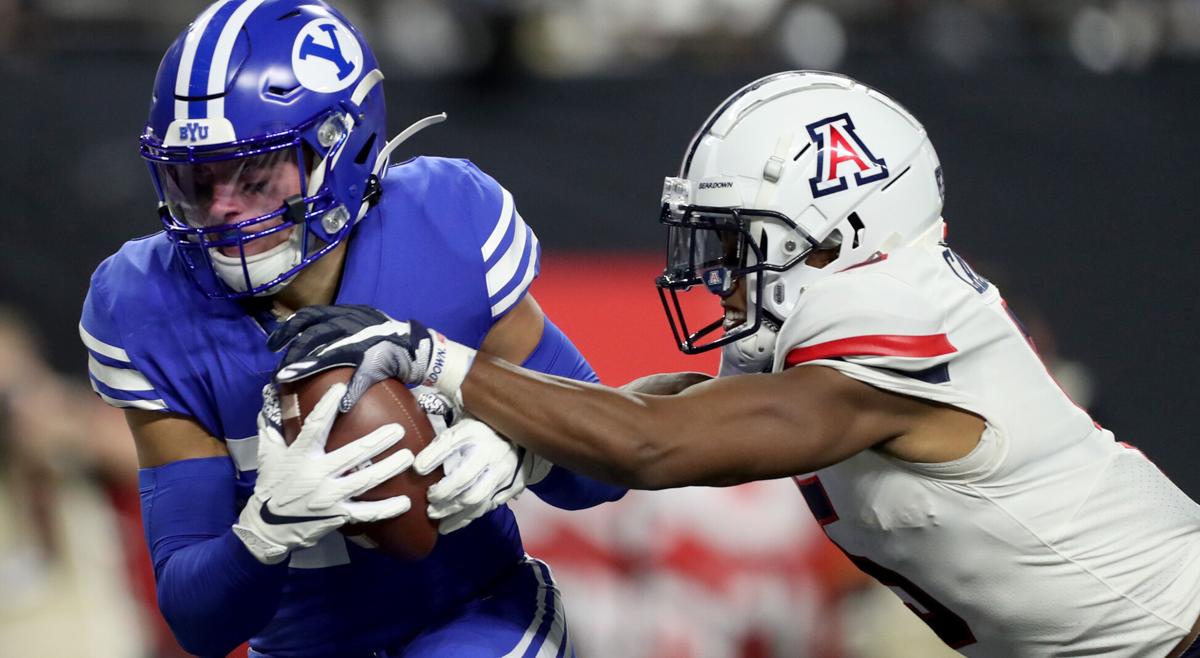The Big 12 moved swiftly to remake itself after losing Texas and Oklahoma to the SEC over the summer, voting Friday to invite Houston, Cincinnati, UCF and BYU.
As soon as the 2023 season, the Big 12 could have 14 members, at least until the Longhorns and Sooners officially depart.
How might the changes in two other Power Five leagues impact the Pac-12?
Actually, its position has improved immensely in the past two months.
That might come as a surprise to fans who have become accustomed to bad news at strategic levels, but the picture seems clear:
Yes, a stronger conference, the SEC, became even stronger with the additions of the Sooners and Longhorns — so strong, in fact, that the Pac-12, Big Ten and ACC formed an alliance to counteract the SEC’s influence.
But at the same time, one of the Pac-12’s peer leagues, the Big 12, has been weakened dramatically.
The incoming quartet will help stabilize the Big 12, but those schools lack the brand power to return the conference to previous levels financially and competitively.
Imagine the Pac-12 losing USC and replacing the Trojans with Boise State. It would be whole numerically but not nearly as strong.
Well, the Big 12 just lost the equivalent of two USCs.
But that’s not all: The Pac-12’s financial position relative to the ACC is about to improve exponentially, as well.
The former will renegotiate its media rights contracts in a few years and receive a massive windfall — perhaps an increase of 40% or more annually from current levels.
But the ACC, which is on par with the Pac-12 financially, is locked into its media rights deals for years to come. It’s essentially stuck.
In other words, the Pac-12 could very well emerge as the clear No. 3 in the conference hierarchy by the midpoint of the decade.
That’s not a bad spot for the conference, not bad at all — and it didn’t have to expand to get there.
However, changes in the Big 12 could adversely affect the Pac-12’s non-conference scheduling situation.
During its time as an Independent, BYU has been readily available and in need of games — typically, it schedules three or four matchups per year with Pac-12 schools.
The relationship works well for both sides: BYU sells tickets when it visits Pac-12 stadiums, and the games in Provo are manageable logistically for Pac-12 teams.
And while not as successful as it once was, BYU provides quality competition.
For Pac-12 teams looking to include a B-level game on their schedules — below the top tier of the Power Five but not a creampuff — the Cougars are ideal.
Essentially, the Pac-12 has reaped the benefits of having BYU in the conference without having BYU in the conference.
The relationship is now in jeopardy.
As a member of the Big 12, the Cougars will have fewer openings and less need to stock their schedule with Pac-12 opponents.
Hopefully, the Holy War will continue — it’s one of the best rivalries in captivity. But we could see a marked reduction in Pac-12 games against BYU starting in the second half of the decade.
Scheduling is not easy for the Pac-12, in part because it has only one other conference in the Mountain and Pacific time zones, the Mountain West. (The other eight FBS conferences are all in the Eastern and Central zones.)
The alliance with the Big Ten and ACC won’t lessen the demand, either: Every Pac-12 team will still need one or two games each season against non-Power Five opponents.
So a tricky aspect of the football machinery might get a bit trickier for the Pac-12. But strategically, its overall position has been strengthened as the result of changes elsewhere in the Power Five.





